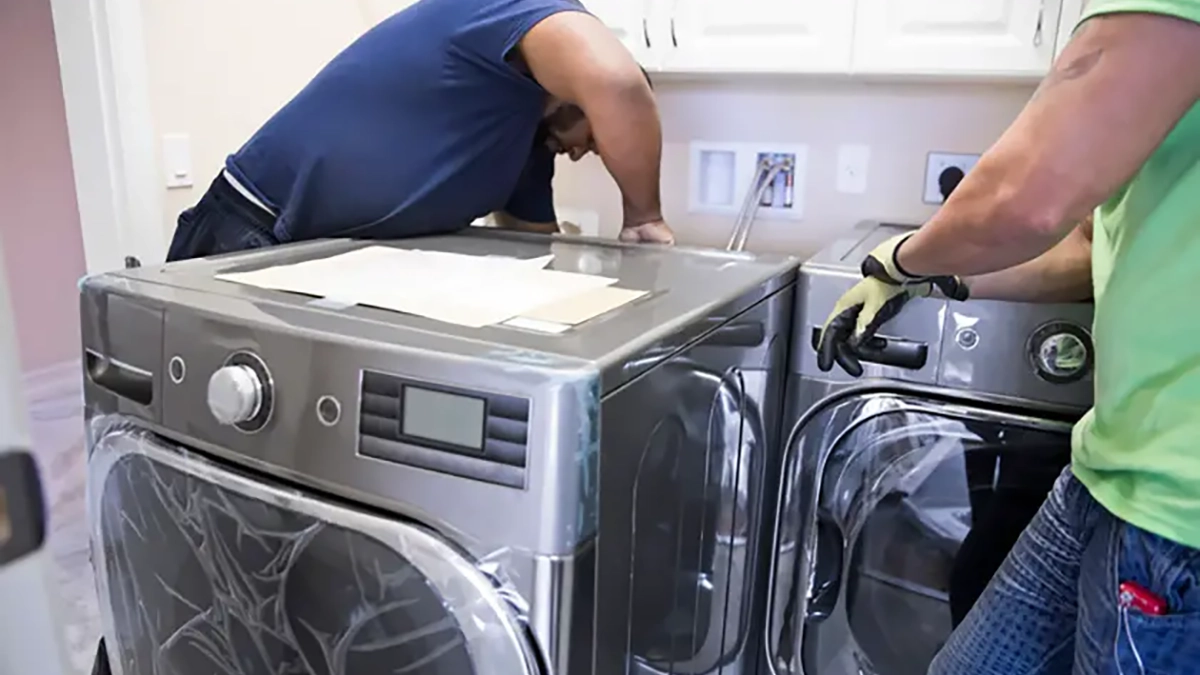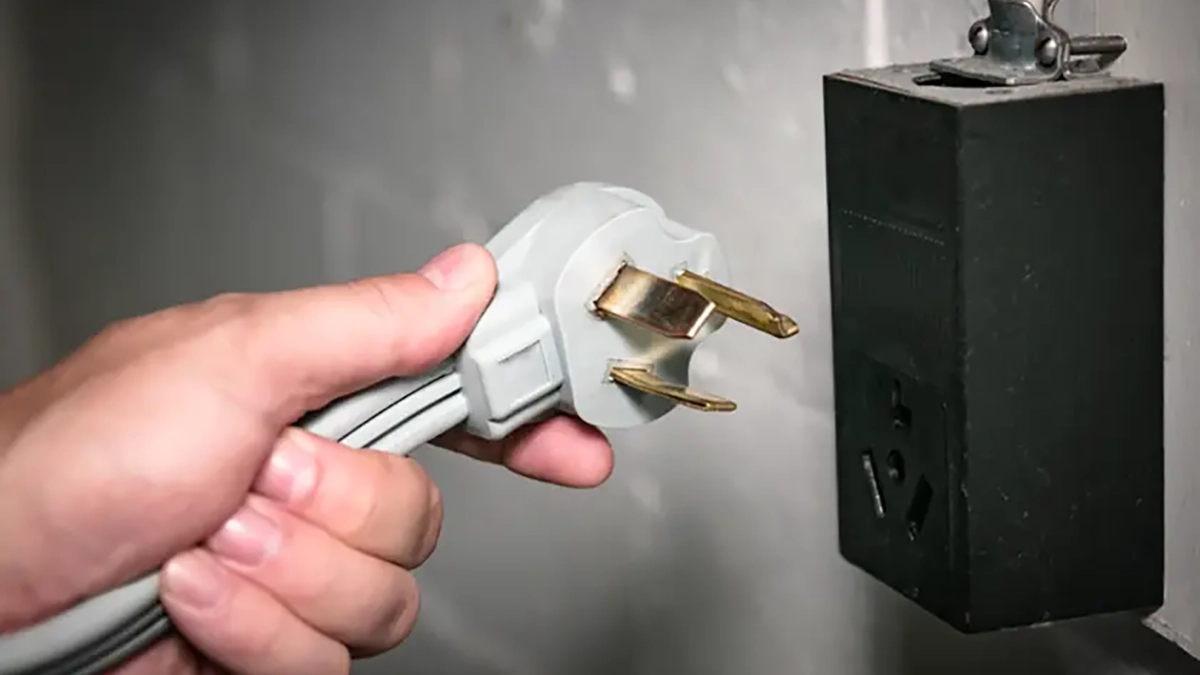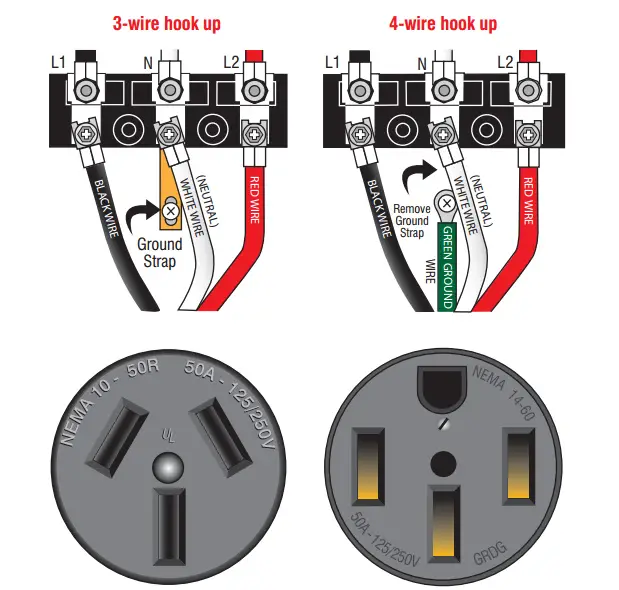When installing a new dryer, it’s crucial to have the correct breaker and wire size for electric dryers. Dealing with electricity is a serious issue; getting it wrong could damage the dryer or cause an electrical fire.
A 240v electric dryer wire size uses a 10-gauge wire and a 30 amp breaker. For 110v compact or gas dryers, a 12-gauge with a 20 amp breaker is sufficient according to the National Electric Code (NEC).
While you theoretically could plug a 110v dryer into an outlet on a 15-amp circuit, you risk tripping the circuit breaker if you run multiple household appliances, exceeding the circuit’s capacity.
Electric dryer breaker size, voltage, and wire gauge can get confusing if you don’t know much about electrical work. But it isn’t that complicated once you break it into manageable pieces, which I’ll do throughout this post.
Get FREE estimates from licensed electricians in your area today. Whether you need to replace an outlet, hang a ceiling fan, a new electrical panel, or repair wiring, We Can Help!
Breaker and Wire Size for Dryers Explained
The wire and breaker size you need for your electric dryer depends mainly on the power needs of your appliance. While there are apparent exceptions, electric dryers have three main voltage categories: 220V/240V and 110V/120V.
240-volt electric dryers are by far the most common that you’ll see. Most electric dryers in the laundry rooms of homes in the United States are likely 240 volts.
220-volt dryers are nearly identical to 240-volt dryers, and many 220-volt appliances get marketed as 240-volts to simplify things. When wiring them, there’s virtually no difference between 240 and 220-volt electric dryers; they require the same size wire and breaker.
110V/120V dryer circuits are usually associated with a gas dryer where less current is needed. Meanwhile, 240-volt dryers require a 3- or 4-prong electric dryer plug, depending on the type of dryer outlet present. The gas dryer 110V/120V dryer plug powers the gas dryer electronics and plugs directly into a standard wall outlet.
Now that we’ve got that out of the way and you’re all caught up on the different appliance voltages you’re likely to encounter, let’s look at the breaker and wire gauges you’ll need for your electric clothes dryer.

Breaker Size for Electric Dryers
| Electric Clothes Dryer Size | Recommended Circuit Breaker |
|---|---|
| 220/240 volts | 30 amps |
| 110/120 volts | 15 or 20 amps |
Selecting the correct size circuit breaker for your electric clothes dryer is crucial. Installing a breaker that is too small will continuously trip when you run your electric dryer, and getting one that is too powerful can be a safety concern.
Most electric dryers use a double pole 30 amp breaker for dryers. A double pole breaker is 240 volts. 220V electric dryers are incredibly similar and require the same electrical circuit breaker size to function correctly. Both electric dryer sizes pull between 10 and 30 amps.
A 30-amp, double-pole breaker covers two breaker spaces inside the electrical panel. The dryer breaker inside the electrical panel works for electric clothes dryers.
For more compact 110V/120V electric dryers, you can use a much smaller dryer circuit breaker. Typically, you plug these less powerful electric dryers directly into a wall outlet, so a 20 or 15-amp breaker is sufficient. These electric dryers typically pull 7.5-15 amps.

Wire Size for Electric Dryers
| Electric Dryer Size | Recommended Wire Size |
|---|---|
| 220/240 volts | 10 AWG |
| 110/120 volts | 14 or 12 AWG |
Once you’ve determined the dryer breaker size, using the correct dryer wire size is crucial.
For 240V and 220V electric dryers using a 30-amp circuit breaker, you should use 10/3 American Wire Gauge (AWG) wire. 10/3 has two hot wires, a neutral wire, and a ground wire in the cable. It’s best to use the larger diameter wire to reduce heat from the flow of electricity.
You should wire 110V/120V for compact electric dryers that plug into wall outlets using 14 or 12 AWG wires. If your outlet has a 15 amp breaker, use a 14 gauge wire. And if your outlet has a 20 amp breaker, you should wire the dryer circuit using a 12 gauge wire.
You can use a 12-2 wire with ground wire with a 20 amp breaker for a 110-volt electric dryer, but not for a 220-volt dryer.
If you’re wiring an electric dryer receptacle, typically for 240V or 220V appliances, you may wonder whether to use a 3-prong or 4-prong outlet. Which one you should use is very straightforward, according to the codes made by the National Electric Code (NEC).
Always use a 4-prong receptacle for a newly installed electric dryer circuit. While you might see 3-prong ones in older houses, newer NEC guidelines now require using 3-prong outlets for 240V and 220V electric dryers. If you have an existing 3-prong dryer outlet, it is grandfathered, and you can use a 3-prong dryer plug wire.
4 Prong vs 3 Prong Electric Dryer Plugs
The main difference between 4-prong and 3-prong dryer plugs is the addition of a separate ground wire in the 4-prong dryer receptacle.
A 4 prong dryer plug has four slots, with two slots for the “hot” wires (typically red and black), one slot for the “neutral” wire (generally white), and one slot for the “ground” wire (ordinarily green or bare copper).
This design was introduced in 1996 by the National Electric Code (NEC) to improve the safety of electric dryers. By providing a separate ground wire, a 4-prong plug can help to prevent electrical shocks and fires in the event of a fault in the dryer.
A 3-prong dryer plug, on the other hand, has three slots, with two slots for the “hot” wires (typically black and red) and one slot for the “neutral” wire (generally white). There is no separate ground wire, as the dryer’s frame is used as the ground. This design is older and less safe, as it does not provide the same level of protection against electrical faults as the 4-prong plug.
If you have an older electric dryer with a 3-prong plug and want to use it in a newer building, you may need an electrician to install a 4-prong wire to meet the NEC code.

What If You Don’t Use the Right Size Breaker for Dryer?
If you don’t have the perfect hardware, you may wonder what would happen if you used a lower or higher amp breaker for your electric dryer. Let’s explore this question a little more.
Lower Amp Breakers
What would happen if your electric dryer required a 30 amp breaker, but you installed a 20 amp one (for example) instead?
Typically, using a lower amp branch circuit breaker, like a 25 amp breaker, for an electric dryer is not a safety problem, but it will likely consistently trip the breaker. The dryer will pull more amps than the breaker allows, causing it to trip and shut off power completely. While installing a lower amp breaker usually isn’t necessarily a safety issue, it sure will be annoying and prevent you from properly using your electric dryer.
Higher Amp Breakers
Now, let’s look at what would happen if you used a higher amp breaker than recommended for your electric dryer. What would happen if your dryer required a 30 amp dryer breaker, but you installed a 50 amp one (for example) instead?
If you use a 10AWG wire size for electric dryers but install a breaker larger than 30 amps, the dryer breaker may not trip from an overcurrent and risk causing an electrical fire or harming your electric dryer. A larger amperage breaker won’t trip when an overcurrent occurs, which can permanently damage the dryer.
However, if you use the correct size wire for a 50 amp breaker (in this case, 6-gauge wire), even though your dryer only requires 30 amps, you should be fine. Most modern appliances have built-in overcurrent protection and will bump the 50 amps to the needed level without causing harm.
FAQs
What size wire for dryer breaker do I need?
For a typical electric dryer, you will need a 30 amp circuit breaker and a wire size of 10 AWG (American Wire Gauge).
Is 10/3 wire heavy enough for a dryer?
Yes, 10/3 wire is heavy enough for an electric dryer.
What size wire do I need for a 220V dryer?
You will need a 10-gauge wire for a 30-amp 220V dryer.
What size breaker for an electric dryer?
For a typical electric dryer, you will need a 30-amp circuit breaker.
Conclusion
When you first look at which breaker and wire size for electric dryers, all the numbers and nuances can make it seem overwhelming. But once you take a moment to understand the reason behind the numbers, things become much clearer.
Once you’ve found your standard dryer’s voltage (typically 240V, 220V, or 110V/120V), choose the correct size breaker. Use a 30-amp breaker for 240V or 220V dryers and a 15 or 20-amp breaker for 110V/120V dryers.
Next, choose the correct gauge wire size for the electric dryer breaker. 10-gauge AWG wire size for 30 amp breakers, 12-gauge wire for 20 amp breakers, and 14-gauge wire for 15 amp breakers. If you need to wire a new branch circuit receptacle for your electric dryer, always install a 4-prong dryer cord and plug to comply with the current NEC code.








